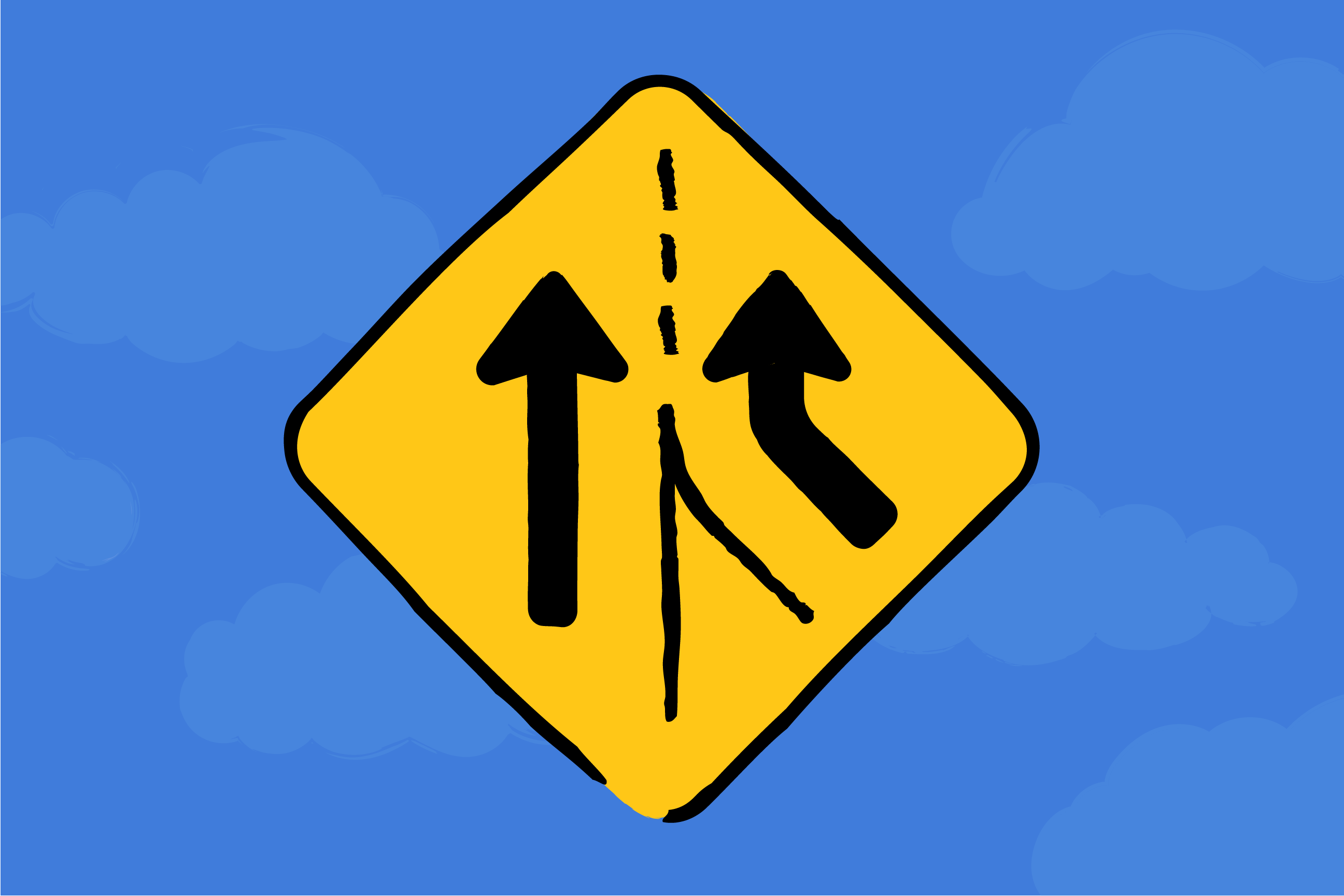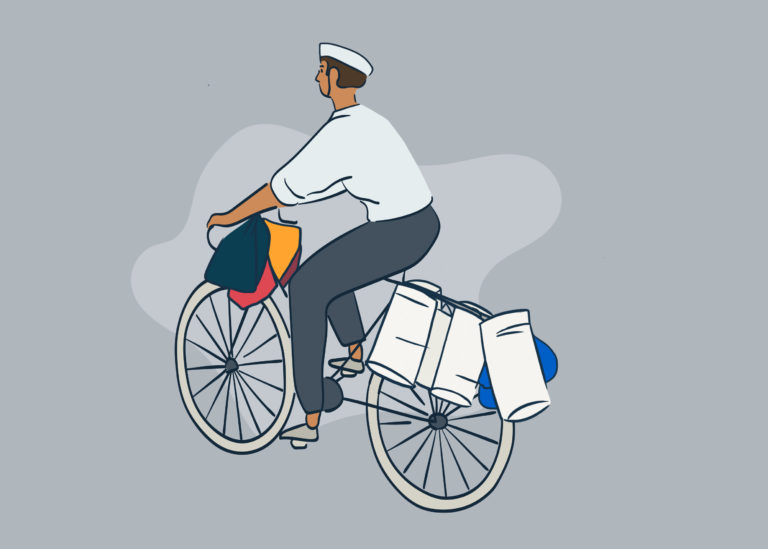Service design: It’s not just another buzzword

Service design is a type of design. It’s similar to product design or interaction design, but is more abstract. You can’t hold a service and assess it in your hands.
A service is a combination of touchpoints that can involve a mix of physical, digital, and human interactions. Service Design is the deliberate, holistic creation of those touchpoints and the experience a customer has with an organization. It’s about the complete journey of a customer, why they engage, what they need, what they want, and working within reasonable constraints to provide that.
Within the world of design there are a lot of terms—Design Thinking, Experience Design, UX, UI, Interaction Design, User Centered Design, Customer Experience, etc.—and it might feel like Service Design is just another buzzword. Companies use these terms to differentiate themselves, and it can be overwhelming when trying to understand which terms are different and which terms actually matter.
However, I think Service Design is different. It’s not just a buzzword, and this term does matter. Service Design brings more layers to the entire design process. Like I mentioned above, it’s about all the touchpoints. You have to understand and consider many stages of a process, different users with unique goals, and varying emotions, all while designing individual interactions at each touchpoint to create overall cohesion.
We all experience services regularly. Think about car insurance—the regular payments, the agent, the coverage that’s abstract until it’s needed. Or consider public transportation—the tickets or transit cards, the website or kiosk used to refill transit balance, the transportation itself. Both are services comprised of many touchpoints.
Mapping A Service’s Touchpoints
About a month ago I had to take my car in for a 35,000 mile checkup. I have a Toyota, which came with ToyotaCare. ToyotaCare is Toyota’s way of planning out the services their customers need for the first 20,000 miles (or two years) with the option to purchase the service to cover up to 45,000 miles (or an additional two years). ToyotaCare itself is a much larger, complex service, but for now, I’m just going to focus on a portion—my 35,000 mile checkup—and break down the touchpoints.
Before even arriving at the dealership, I was reminded of my upcoming appointment by a little sticker placed in the upper-left corner of my car windshield. This sticker indicates the mileage at which I need to schedule my next appointment. That tiny sticker is the first touchpoint of this 35,000 mile maintenance checkup.
I used the online portal to schedule my appointment—this is my second touchpoint. All my information is saved in their system; they know what ToyotaCare stage is coming next for me and automatically make suggestions, so I confirmed the services and chose from the appointments available on their calendar.
About a week before the appointment, I got a confirmation email for the scheduled appointment as well as a reminder email. These are the third and fourth touchpoints.
I drove into the dealership the day of my appointment and as soon as I arrived someone welcomed me, checked my car’s mileage, tagged my key, and sent me inside to the desks—my fifth touchpoint.
Inside, a rep flagged me over, checked me in and asked if I was waiting or dropping off (I was waiting so my car gets priority)—my sixth touchpoint. I asked the rep some very specific questions about what I had left within my ToyotaCare and by when I needed to use them. He looked some things up and answered my questions.
I then took a seat and waited. Not so obvious, but this is my seventh touchpoint (Toyota has considered this downtime): they provide some light refreshments, TVs, and desk space in case you need to work. It’s nothing amazing, but it shows that they’ve thought about the waiting experience of their customers.
Once my car was complete, the same rep who checked me in came out to find me—my eighth touchpoint. I liked that it was the same rep, because he referenced the questions I had earlier and actually took the time to double check what he told me. It was a nice bookend to my experience that day.
He handed me a confirmation—my ninth touchpoint—and my keys, and I was done.
I got a follow up thank-you email—my tenth and final touchpoint for my 35,000 mile checkup—later that day.
Toyota has crafted their service of ToyotaCare to help their customers maintain their vehicles. The first two years come included with a new car purchase, but I found the service so valuable, I purchased the next two years when I completed the included services last summer—paying extra for the convenience of the service. So now, all the maintenance checkup touchpoints are planned for me, as well as continual roadside assistance if I should ever need it, through May of 2019.
The term Service Design carries a lot of weight. Many parts and pieces of different sizes, attributes and complexity are necessary to create a complete, consistent experience. Each piece could be improved on its own, but not optimized without consideration of the whole. My Toyota example is just one small part of the complete ToyotaCare service, which also includes roadside assistance, in-person checkups, a booklet to track services, and more—but it all comes together in the overall design of the ToyotaCare service.
Service Design at Think Company
At Think Company, we’ve always described ourselves as providing optimal experiences for our clients’ customers and employees. Those experiences often focus on digital design. So, for better or worse, we are often placed into the UX bucket—a bucket that’s confined by the screen and how a user flows from the moment they reach a landing page. However, we often start before that.
Our team looks beyond the screen and beyond the moment that digital tool or website is used. We dive into users’ lives, look at their day-to-day, and understand both their short and long-term goals. We paint a picture of their full experience so that we and our clients gain a richer understanding of the relationship customers or employees have with an organization and the tools they rely on. We learn what we can improve with the digital tools today, but we also expose new opportunity areas where the digital, or other solutions, can meet new needs.
Currently, I am working on a project with a client who’s a data provider. This data provider wanted to clean up the UX of their tool. We started the project with a basic heuristic evaluation and honestly, from a UX perspective, we could have stopped there. There was a lot of low-hanging-fruit that, once addressed, would quickly improve the user experience with the tool. But, with Think Company’s research driven methodology, we also turned to the users. We did research taking a Service Design approach and went beyond the UX of the tool.
We gathered an understanding of the customers’ day-to-day job and how our client’s tool fit into their workflows. In this case, we learned that users currently only access the tool to download raw data, and after that turn to spreadsheets and other tools to analyze and visualize that data. Users print spreadsheets and charts, highlight specific data points by hand, and then share stories the data tells with their sales targets.
Through our research, we were able to tell a complete story of these users. We were able to clearly articulate the role the client tool plays today while also highlighting opportunities to meet additional user needs. We worked with our client to shift to a service mindset and provide a tool for their customers that provides value at many stages of their jobs instead of being just a raw data provider.
This is why Service Design matters to Think Company. Service Design opens the scope to the full experience a customer or employee may have with a company, beyond just the UX. As Service Designers, we can better approach a problem by understanding an experience as a whole instead of limiting ourselves to only the digital interface—because not everything is going to be solved with digital. Service Design allows us to first understand the problem and then provide the best solution for that problem across all touchpoints, digital or not.



